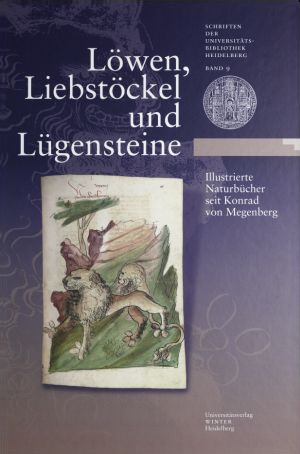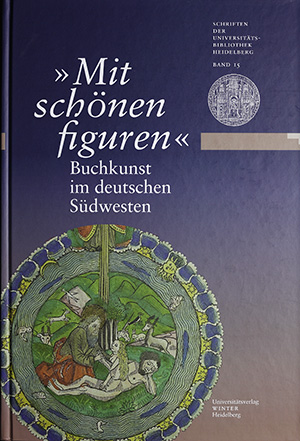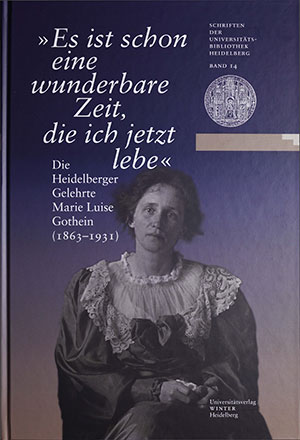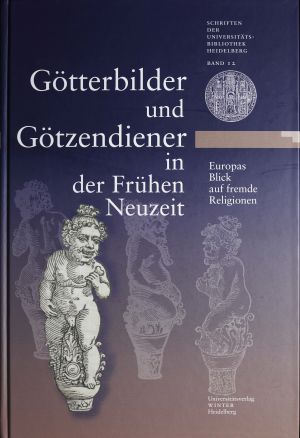Effinger, Maria
Löwen, Liebstöckel und Lügensteine: Illustrierte Naturbücher seit Konrad von Megenberg
Konrad von Megenberg is considered a late medieval pioneer of German scientific prose directed at a lay audience. On the occasion of his seven-hundredth birthday, Heidelberg University Library devoted an exhibition to his best-known work, “buch von den natürlichen dingen”, also known as “Buch der Nature” (“book of natural things”or “Book of Nature”), a prototype of illustrated natural history books. The Heidelberg Bibliotheca Palatina comprises as many as four medieval manuscripts of this work. Two of these manuscripts are richly illustrated.
According to the medieval scholastic worldview, Konrad von Mengenberg starts his investigation with humans and the cosmos, before systematically organizing “the natural things” of the three kingdoms of nature – zoology, botany, and geology. In the late Middle Ages the tradition of this work was combined with memorable illustrations. Like the texts, they were based on a long tradition and were themselves widely received until the modern era.
More information and "Virtual exhibition".
Der Codex Manesse und die Entdeckung der Liebe: Eine Ausstellung der Universitätsbibliothek Heidelberg, des Instituts für Fränkisch-Pfälzische Geschichte und Landeskunde sowie des Germanistischen Seminars der Universität Heidelberg zum 625. Universitätsjubiläum
Saget mir ieman, waz ist minne? (Tell me, what is love?) This question, asked by the poet Walther von der Vogelweide inquires about the nature of love and has occupied many travelling singers, noblemen, and even clerics since the High Middle Ages. A variety of texts and images bear witness to the fact that it was no longer enough for a knight to possess the desired lady. He rather strived to win her heart. The many-voiced discovery of the topic of “Minne”, i.e. courtly love, as erotic attraction between man and woman did not just influence the relation between the sexes, it also changed the self-conception of the nobility, and the manners within the courtly society.
The songs and images in Codex Manesse capture this change. The magnificent large-format manuscript is a unique collection of works of Minnesang, offering a large variety of genres and forms, dating from the time of the Staufen dynasty to the post-classical era. The miniatures depicting the poets within courtly scenes, festivities and tournaments, have for a long time shaped the modern perception of the chivalrous Middle Ages. However, the Codex Manesse itself can be interpreted as a historical review: Its aim was to create a written compilation of fading songs which were until then passed on orally. Without this record many texts would be lost today.
By presenting Codex Manesse and other valuable manuscripts from the vaults of Heidelberg University Library, the catalogue illustrates the discovery of love during the High Middle Ages.
More information and "Virtual Exhibition"
"Mit schönen figuren": Buchkunst im deutschen Südwesten
The transition from handwritten to printed books occurred in stages between the middle of the 15th century and around 1500. For over half a century both forms existed side by side. The relationship between the handwritten and the printed book ranged, via changing and reciprocal influences, from pure imitation to competition between the technical and functional means of expression.
The focus of both catalogue and exhibition are artistic book decorations from specific genres: brush painted ornate decorations and borders, figurative pen and ink drawings and overlay miniatures are contrasted with series of wood cuts and printed vignettes.
The exhibition guides visitors through the years 1430 to 1530, using selected examples from the collections of the Württembergian State Library Stuttgart and the University Library Heidelberg. As well as the technical and cultural interplay of this transition phase with relevant examples of the appearance of books, the roles of those commissioning, selling and owning books are also presented. They often significantly influenced the expressive form and content of book decoration as books were also a form of status symbol.
"Es ist schon eine wunderbare Zeit, die ich jetzt lebe": Die Heidelberger Gelehrte Marie Luise Gothein (1863–1931). Eine Ausstellung der Universitätsbibliothek Heidelberg
Marie Luise Gotheins "Geschichte der Gartenkunst" erschien 1914 und ist bis heute ein Standardwerk. In Preußen geboren, verdankte sie ihrem Mann, dem Nationalökonom und Kulturwissenschaftler Eberhard Gothein, ihr akademisches Leben in Karlsruhe, Bonn und Heidelberg. Früh emanzipierte sich die Mutter von vier Söhnen jedoch mit eigenen anglistischen Studien und Übersetzungen. Die Stadt am Neckar wurde der Autorin zur "dritten letzten Heimat". Briefe und Texte von Max und Marianne Weber sowie von Edgar Salin belegen Gotheins Beitrag zum "Heidelberger Geist".
Jedoch sind dies nur Facetten einer vernachlässigten Persönlichkeit der deutschen Wissenschaftsgeschichte. Neben den Gärten beschäftigten sie religions- und kulturhistorische Fragen, später wandte sie sich dem asiatischen Kulturkreis zu und lernte Sanskrit, um das indische Drama zu erforschen. Für ihre Studien reiste sie nach England, Italien, Griechenland, Indonesien, China und Japan. Der Katalog zur Ausstellung stellt Gotheins Leben, Werk und Reisen in einer Gesamtschau vor.
Götterbilder und Götzendiener in der Frühen Neuzeit: Europas Blick auf fremde Religionen : eine Ausstellung der Universitätsbibliothek Heidelberg, der Nachwuchsgruppe "Prinzip Personifikation", Transcultural Studies der Universität Heidelberg und des Instituts für Kunstgeschichte der Ludwig-Maximilians-Universität München
In the early modern period, Europe's view of the world's religions oscillated between attraction and repulsion, between fear of the unknown and simultaneous fascination. In addition to the conflicts over the various inner-European faiths, the confrontation with foreign religions became increasingly important from the 16th century onward: These were not only to be found in Asia, Africa and America, but also in the past of the Old World. The broadening of the European view in geographical as well as chronological terms led at the same time to a deepened consciousness of the identity of one's own culture and its historical conditions. From the beginning, images, mostly book illustrations, played a central role in the formation of these ideas alongside texts. The present volume presents the most effective graphic imprints, the most important texts and traditions on pagan beliefs, gods and cults against the background of the religious, historical-antiquarian and ethnographic interests of the early modern period and illuminates the functions of images and texts on foreign religions for a cultural comparison between science, fiction and polemics.
FAKE - Fälschungen, wie sie im Buche stehen: Eine Ausstellung der Universitätsbibliothek Heidelberg und des Instituts für Europäische Kunstgeschichte der Universität Heidelberg
Fälschungen und Bücher haben mehr miteinander zu tun, als man gemeinhin denken könnte. Naheliegend und nicht weiter erstaunlich ist, dass Fälscher Bücher konsultieren, um daraus Vorlagen für ihre Fälschungen zu gewinnen und sich das notwendige Wissen zu deren Herstellung anzueignen.
Doch es gibt noch mehr Bezüge zwischen Fälschungen und Büchern: Denn die Fälschungen werden sodann oftmals mit Hilfe von Büchern lanciert (z.B. mittels Werkkatalogen), in denen sie von getäuschten Autoren unwissentlich als vermeintliche Originale veröffentlicht werden. Im schlimmsten Fall manipulieren Fälscher zu Täuschungszwecken sogar gleich direkt Kataloge, in denen die Fälschungen dann plötzlich als echte Werke erscheinen. Und am Ende können, wie der spektakuläre 'Galileo'-Fall kürzlich zeigte, sogar ganze historische Bücher gefälscht und als vermeintliche Preziosen verkauft werden. Bücher sind für Fälscher jedoch nicht immer nur von Vorteil, sie können ihnen auch zum Verhängnis werden: Wissenschaftliche Bücher enttarnen Fälschungen und lassen deren Schöpfer auffliegen. Entlarvt, aber dafür nun eventuell populär, vermarkten Fälscher nicht selten ihre eigene Geschichte im Rahmen von Autobiografien bzw. werden in Romanen zu literarischen Figuren.
Die Ausstellung 'FAKE: Fälschungen, wie sie im Buche stehen' thematisiert und dokumentiert diese und weitere Aspekte anhand einer Gegenüberstellung von echten Büchern und gefälschten Kunstwerken.








